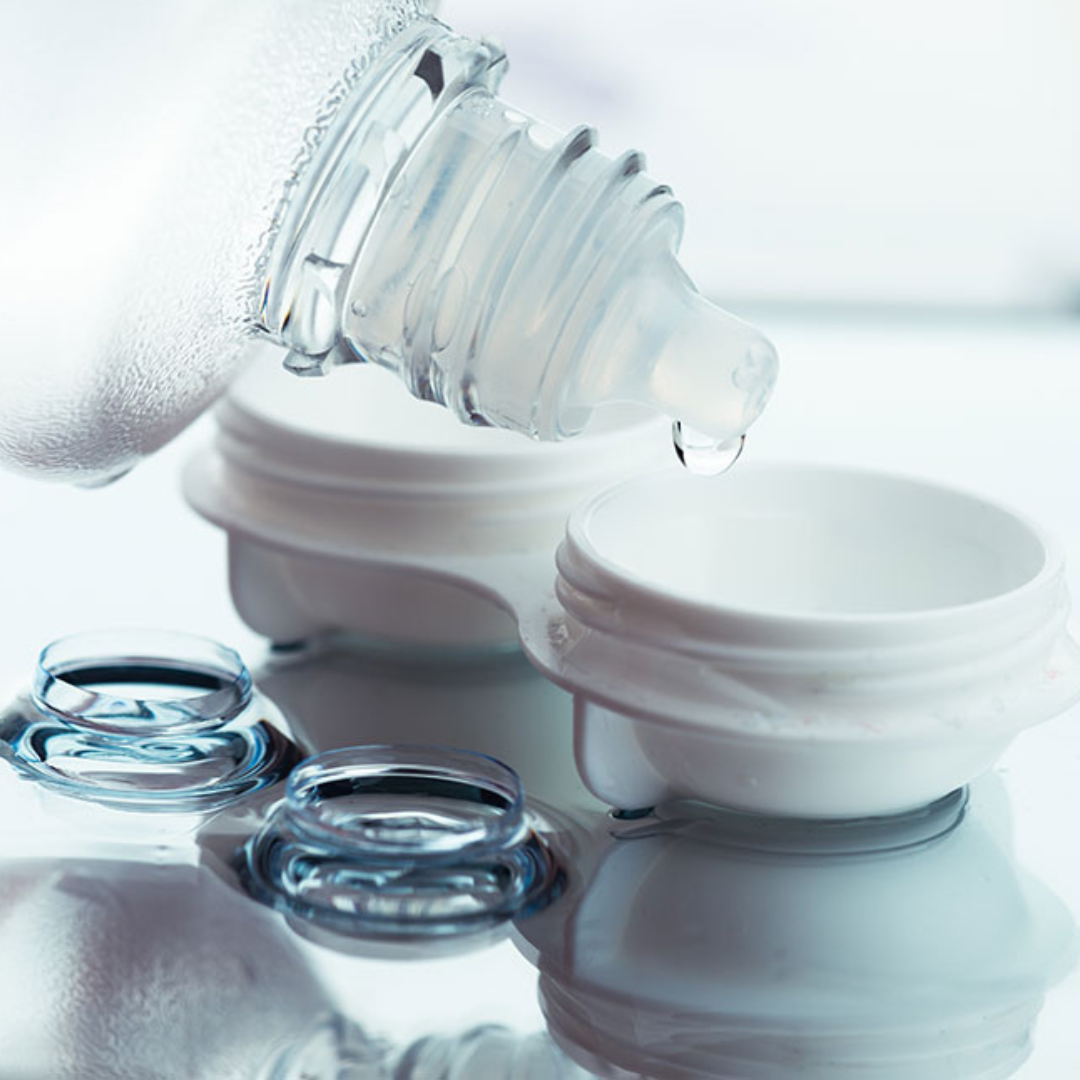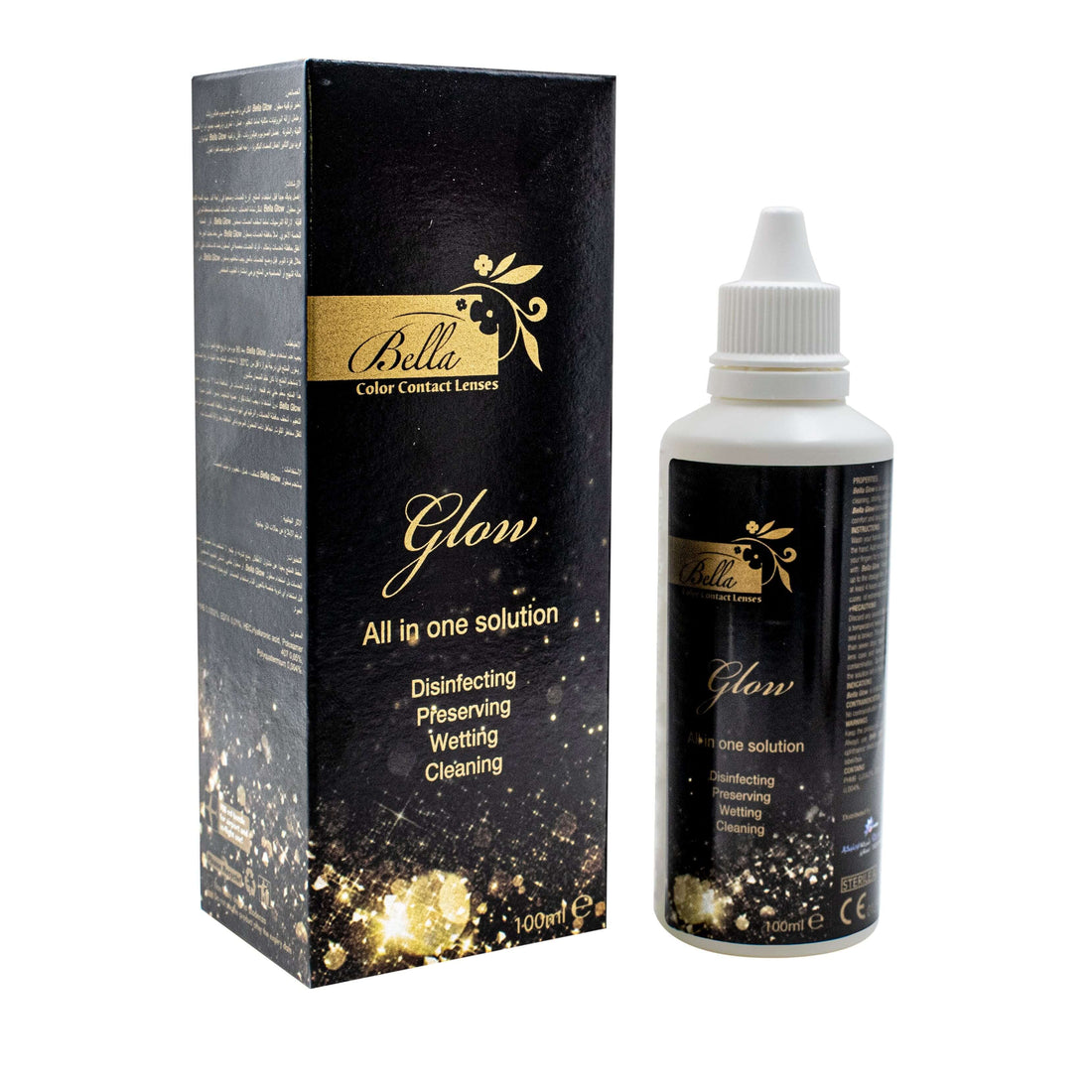Key Takeaway
Proper contact lens care is essential for eye health and lens longevity, especially for colored lenses. Always wash hands before handling, use fresh solution daily, never use water, and follow the recommended replacement schedule. Browse Bella Lenses Collection for high-quality colored lenses designed with your eye health in mind.
Understanding Contact Lenses: Types and Materials
Contact lenses have revolutionized vision correction, offering a glasses-free alternative for millions worldwide. Understanding your specific lens type is the foundation of proper care.
Soft vs. Hard Contact Lenses
Soft contact lenses are made from flexible, water-containing plastics called hydrogels that allow oxygen to pass through to the cornea. These are the most common type, offering excellent comfort and ease of adaptation.
Hard contact lenses (Rigid Gas Permeable or RGP lenses) are made from firmer, more durable materials that maintain their shape while on the eye. Though less common, they provide sharper vision for certain conditions and may last longer with proper care.
The care routines differ significantly between these types:
-
Soft lenses typically require daily cleaning with multipurpose solutions
-
RGP lenses often need specialized cleaning systems and conditioning solutions
Daily, Bi-weekly, and Monthly Disposables
Contact lenses vary in their replacement schedules:
-
Daily disposables: Worn once and discarded, requiring minimal cleaning
-
Bi-weekly lenses: Replaced every two weeks, requiring daily cleaning
-
Monthly lenses: Replaced monthly, requiring thorough daily maintenance
Your replacement schedule directly impacts your care routine, with longer-wear lenses demanding more rigorous cleaning protocols.
Colored Contact Lenses: Special Considerations
Colored contact lenses, including Bella Lenses' extensive collection, contain additional pigments and patterns that require special attention. The colored portion can sometimes attract more deposits, making thorough cleaning even more critical.
For colored lenses like those from Bella Lenses:
-
Clean with greater gentleness to preserve the vibrant colors
-
Follow manufacturer guidelines precisely
-
Be especially vigilant about solution compatibility
Essential Supplies for Contact Lens Care
Proper contact lens care requires specific supplies designed for safety and effectiveness.
Contact Lens Solutions: Types and Functions
Several solution types serve different functions:
Multipurpose solutions handle cleaning, rinsing, disinfecting, and storage in one product. These are most common for soft lenses and simplify the care process.
Hydrogen peroxide systems offer deeper disinfection but require neutralization before lens insertion. These systems are excellent for sensitive eyes or those prone to solution allergies.
Saline solutions are for rinsing only and do not disinfect lenses.
Enzymatic cleaners remove protein deposits during weekly deep cleaning sessions.
The right solution for your Bella colored lenses depends on material compatibility and your eye sensitivity.
Contact Lens Cases: Selection and Replacement
Your lens case is as important as your solution:
-
Choose cases with secure, color-coded caps to prevent mix-ups
-
Replace cases every three months minimum
-
Clean cases daily and allow to air dry
-
Never use cracked or damaged cases
Additional Tools: Tweezers, Applicators, and Removal Devices
For those new to contacts or with dexterity challenges, specialized tools can help:
-
Insertion devices to place lenses without finger contact
-
Removal tools for safely detaching lenses from eyes
-
Digital cleaning devices for enhanced cleaning efficiency
Step-by-Step Contact Lens Cleaning Guide
Establishing a consistent cleaning routine protects both your eyes and your investment in quality lenses.
Daily Cleaning Routine
Follow this essential daily protocol:
-
Wash hands thoroughly with fragrance-free soap
-
Work with one lens at a time to prevent mix-ups
-
Place lens in palm and apply several drops of fresh solution
-
Gently rub the lens with your finger for 20 seconds on each side
-
Rinse thoroughly with fresh solution
-
Fill case with fresh solution and store lenses
This routine removes debris, protein deposits, makeup residue, and microorganisms that accumulate during wear.
Deep Cleaning Procedures
Weekly deep cleaning enhances lens longevity:
-
Use enzymatic or protein removers as directed
-
Extend rubbing time to 30 seconds per side
-
Consider hydrogen peroxide systems for periodic deeper disinfection
-
Follow with regular multipurpose solution rinse before insertion
Special Care for Colored Contact Lenses (Bella Lenses)
Bella Lenses' colored contacts require particular attention:
-
Clean using gentle, circular motions to preserve color patterns
-
Avoid rubbing the colored portion aggressively
-
Use solutions specifically approved for colored lenses
-
Inspect for color fading or pattern disruption during cleaning
Bella Lenses recommends their specialized solution formulated specifically for colored lens maintenance.
Proper Contact Lens Storage Techniques
Proper storage prevents contamination and lens damage between wears.
Short-term Storage Tips
For daily storage:
-
Use fresh solution every time—never "top off" existing solution
-
Ensure caps are tightly sealed after inserting lenses
-
Store case in a clean, dry location away from bathrooms
-
Keep away from extreme temperatures
-
Position cases to prevent solution leakage
Long-term Storage Solutions
For periods of non-wear exceeding two weeks:
-
Clean lenses thoroughly before extended storage
-
Use fresh solution and consider changing solution weekly
-
Store in a cool, dry place away from direct sunlight
-
Label case with storage start date
-
Consider dry storage systems for RGP lenses (consult your eye care professional)
Travel Considerations
Maintaining lens hygiene while traveling requires planning:
-
Pack travel-sized solution bottles in compliance with flight regulations
-
Bring backup lenses and glasses
-
Consider daily disposables for travel simplicity
-
Pack supplies in waterproof containers
-
Allow extra time for proper lens care while away from home
Common Contact Lens Care Mistakes to Avoid
Recognizing and avoiding these common errors will significantly reduce your risk of complications.
Using Water Instead of Solution
Water—even purified or bottled—contains microorganisms that can cause serious eye infections, including Acanthamoeba keratitis, a potentially sight-threatening condition.
Never:
-
Rinse lenses with tap water
-
Store lenses in water
-
Swim or shower while wearing lenses without protective goggles
Reusing Solution
Fresh solution is essential for proper disinfection. Reusing solution:
-
Reduces disinfection effectiveness
-
Concentrates removed debris and microorganisms
-
Increases infection risk substantially
-
Can damage lens materials over time
Ignoring Expiration Dates
Solution efficacy diminishes over time:
-
Check expiration dates before purchase
-
Note opening dates on bottles
-
Discard solutions three months after opening, regardless of expiration date
-
Never use cloudy or discolored solutions
Improper Handling Techniques
Poor handling practices increase contamination risk:
-
Touching lens tips with fingernails
-
Using lotioned hands when handling lenses
-
Failing to close solution bottles immediately after use
-
Inserting lenses with makeup residue on fingers
Recognizing and Addressing Contact Lens Problems
Prompt attention to lens issues prevents complications and preserves eye health.
Signs of Damaged Lenses
Inspect lenses regularly for:
-
Tears or chips along edges
-
Protein deposits that don't clean away
-
Color changes or clouding
-
Changes in lens flexibility
-
Distorted or uneven appearance
Damaged lenses can scratch your cornea and should be replaced immediately.
When to Replace Your Lenses
Adhere strictly to replacement schedules:
-
Daily lenses: Discard after each use
-
Bi-weekly lenses: Replace every two weeks, regardless of wear time
-
Monthly lenses: Replace after 30 days of wear
-
Consider early replacement if experiencing discomfort or vision changes
Eye Irritation and Infection: Warning Signs
Seek immediate professional care for:
-
Redness that doesn't resolve quickly
-
Persistent pain or discomfort
-
Light sensitivity
-
Excessive tearing or discharge
-
Blurred vision that doesn't clear with blinking
-
Feeling of something in your eye
These symptoms may indicate corneal damage or infection requiring prompt treatment.
Specialized Care for Bella Colored Lenses
Bella Lenses offers premium colored contacts designed for both aesthetic appeal and eye health.
Bella Lenses Product Range
Bella Lenses provides a diverse collection:
-
Natural tones that enhance your eye color
-
Vibrant options for dramatic transformation
-
Specialty effects for unique occasions
-
Prescription and non-prescription varieties
Maintenance Tips for Vibrant Colors
Preserve your Bella Lenses' vibrant appearance:
-
Clean with approved solutions only
-
Avoid oil-based makeup removers near eyes
-
Remove lenses before applying face products
-
Store away from direct sunlight to prevent fading
-
Clean from center outward to preserve color patterns
Extending the Life of Your Bella Lenses
Maximize your investment with these practices:
-
Follow all cleaning protocols consistently
-
Handle gently when inserting and removing
-
Avoid wearing during swimming or showering
-
Remove before sleeping (unless specifically designed for extended wear)
-
Keep fingernails short and smooth
Contact Lens Care FAQs
Q: Can I sleep in my Bella colored contact lenses? A: Unless specifically designed and approved for extended wear, you should never sleep in colored contact lenses. Sleeping in unapproved lenses reduces oxygen flow to your cornea and significantly increases infection risk.
Q: How can I tell if my contact lens solution has expired? A: Check the expiration date on the bottle. Additionally, discard opened bottles after three months, regardless of expiration date. Solutions may appear cloudy or discolored when expired or contaminated.
Q: Is it safe to wear contacts while swimming? A: Swimming while wearing contacts is not recommended due to water contamination risks. If you must wear lenses while swimming, use tight-fitting goggles and disinfect lenses immediately afterward.
Q: My eyes feel dry with contacts. What can I help? A: Consider using preservative-free rewetting drops approved for contact lens use. Maintain proper hydration, take regular screen breaks, and consult your eye care professional about switching to more breathable lens materials.
Q: How should I clean my Bella colored lenses if they feel uncomfortable? A: Remove them immediately and clean thoroughly using fresh solution with the rub and rinse method. If discomfort persists after reinsertion, remove the lenses and consult your eye care professional.
Q: Can I use any brand of solution with my Bella colored lenses? A: No. Only use solutions specifically approved for your lens type. Bella Lenses recommends their specialized solution designed to preserve color vibrancy while ensuring proper disinfection.
Conclusion and Key Recommendations
Proper contact lens care is a non-negotiable aspect of eye health. By following these guidelines, you'll enjoy comfortable wear, reduced complication risks, and extended lens life.
Remember these essential practices:
-
Wash hands thoroughly before handling lenses
-
Never expose lenses to water
-
Replace solution daily without reusing
-
Follow recommended replacement schedules
-
Remove lenses at the first sign of discomfort
-
Maintain regular eye examinations
Bella Lenses is committed to providing premium colored contact lenses designed for both aesthetic appeal and eye health. Browse our complete collection to discover the perfect lenses for your unique style.






